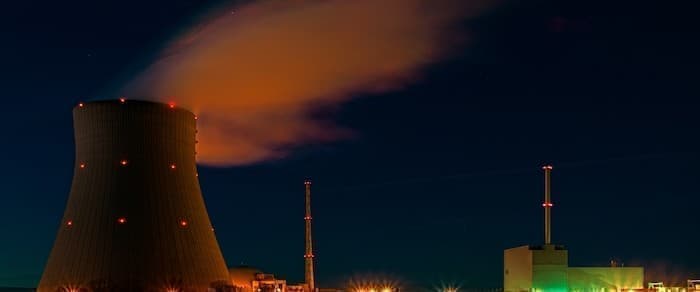Last year, Bloomberg conducted a review of “correspondence between the commission and owners of 60 plants” and made some terrifying discoveries. According to their own risk assessments, “54 of their [60] facilities weren’t designed to handle the flood risk they now face.”

The United States is not only one of the first and foremost nuclear powers of the world, it has also long been the nuclear powerhouse of the planet, being responsible for a whopping two thirds of global nuclear energy production. Domestically, the United States’ nuclear power plants account for approximately 20 percent of the nation’s total electricity and produce over 50 percent of the entire country’s carbon-free energy generation. But these superlatives, both global and domestic, won’t last. As nuclear energy grows around the world, the industry is in deep trouble in the U.S., where the aging nuclear fleet has been battered by a flood of cheap shale oil and natural gas, and is now barely clinging to life thanks to hefty government subsidies and leaving the shockingly high cost of radioactive waste maintenance to the taxpayers.
Meanwhile, the global nuclear industry is charging full force ahead, with China and Russia leading the charge. “GlobalData Plc predicts that China will pass France as the world’s No. 2 nuclear generator in 2022 and claim the top spot from the U.S. four years after that,” Bloomberg Green reported in June. the United Arab Emirates just achieved a major milestone for the Middle East when their new nuclear plant connected to the grid earlier this week, a first in the Arab world. At the same time Russia and China are embroiled in a competition to establish dominance in the burgeoning nuclear energy industry in Africa.
Earlier this summer, Oilprice questioned whether the U.S. oil industry would be able to survive COVID-19, as it threatens to be left behind in economic recovery plans. But now, this may be the least of the United States’ nuclear woes.
“Climate change—particularly intense heat—is advancing so rapidly that it poses physical as well as credit risks to America’s aging nuclear fleet, Bloomberg Green reported this week, based on a new report released by Moody’s Investors Service. “Our plants are fairly hardened to severe weather,” Moody’s analyst David Kamran and the lead author of the report told Bloomberg Green. “But climate change is moving quickly.”
Back in 2011, the U.S. Nuclear Regulatory Commission “asked domestic plants to conduct their own assessments of risks from climate change and other natural hazards.” This request was spurred by the devastating nuclear disaster at Japan’s Fukushima-Daiichi nuclear power plant when the infrastructure was damaged by a 9.0 earthquake and subsequent tsunami. The meltdown was the worst nuclear disaster since Chernobyl and reminded the world to be appropriately afraid of nuclear mishaps.
Last year, Bloomberg conducted a review of “correspondence between the commission and owners of 60 plants” and made some terrifying discoveries. According to their own risk assessments, “ 54 of their [60] facilities weren’t designed to handle the flood risk they now face.”
Four Twenty Seven Inc., a climate risk data company acquired by Moody’s in 2019, “evaluated the potential effects of heat stress, water stress, hurricanes, flooding, and rising sea levels on 57 U.S. nuclear power plants over the next 20 years. It found that while a handful of plants—including Cooper Nuclear Station in Nemaha, Neb. and Prairie Island in Goodhue, Minn.—face severe risk from floods, far more either will face or already face ‘red flag’ conditions from heat.”
Nuclear plants depend on water to keep from overheating. (In Japan, the volume of tainted, radioactive water–1.3 million tons of it– that has been used to keep the damaged Fukushima plant from melting down will soon outgrow the nation’s storage capacity and the country has suggested dumping it into the Pacific Ocean.) But in a world faced with climate change and extreme water stress, this could pose a serious challenge. “In times of intense heat and drought, water resources can become either too warm or too scarce, forcing shutdowns,” writes Bloomberg Green. “This has already happened, and not just in the South: in 2012, Dominion Energy Inc.’s Millstone nuclear plant in Waterford, Conn.” The U.S. nuclear plants at the highest risk for extreme water stress in the future are those in the Rocky Mountain region, the Colorado River region, and California.
This does not mean that these plants will melt down. What it means is that these plants need to start innovating and adapting now to what will be a much harsher environment coming down the pike. But in an industry that is already struggling to break even, expensive climate-proofing is easier said than done.
By Haley Zaremba for Oilprice.com
